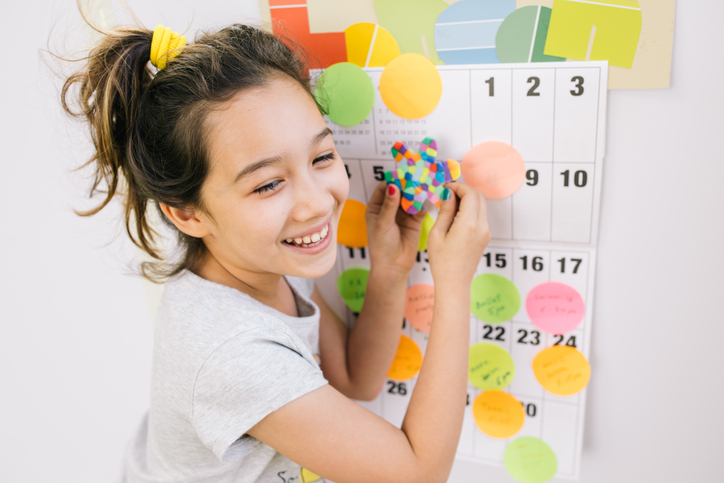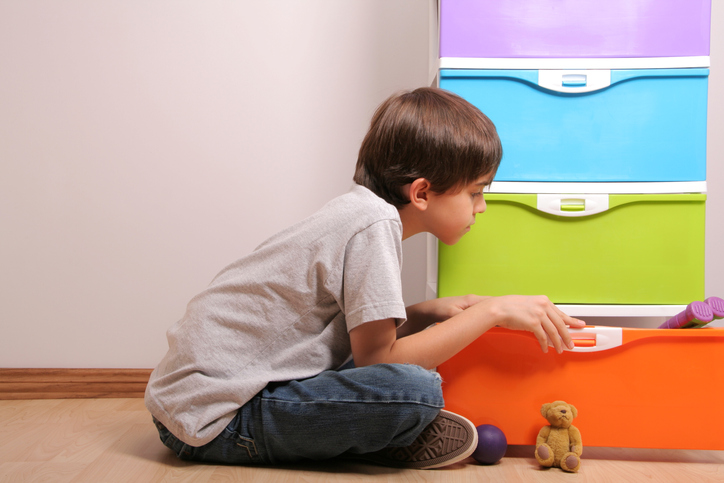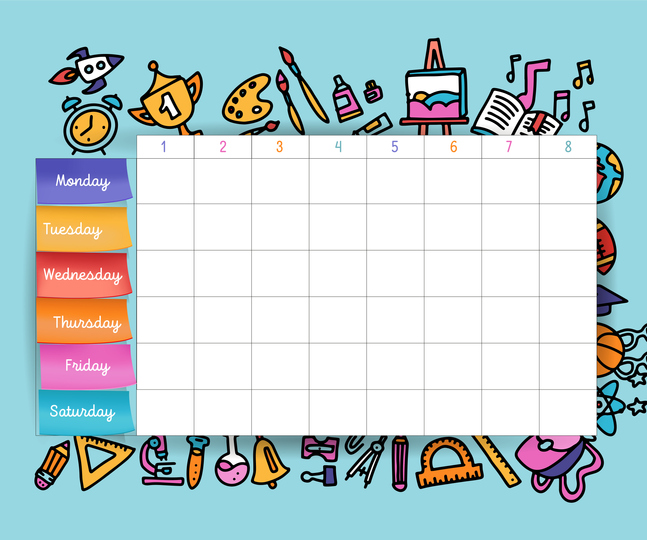Managing Cabin Fever with Autism Spectrum Disorder
- Category: Living Well, Parenting
- Posted on:
- Written By: Dr. Sarah Miller, Psychologist and Behavior Analyst

It's no surprise that social distancing, school closures, and work changes are having an impact on families in our community and across the country.
These changes are also affecting households with family members who have autism spectrum disorder, says Dr. Sarah Miller, a licensed psychologist and board-certified behavior analyst with the Autism Center at Children’s Hospital New Orleans.
One question she often receives during virtual visits is, "How do I keep my toddler with autism calm and avoid meltdowns from cabin fever while we hunker down due to COVID19 restrictions?”
"First, let’s acknowledge that all the lifestyle changes associated with social distancing and stay-at-home orders are difficult for all of us to follow and adjust to," Dr. Miller says. "But these changes can be particularly distressing for our children with autism spectrum disorder because of their unique combination of symptoms."
For example, children with ASD often have difficulty adjusting to changes in routine, and it is likely that everything in their routine has been changed by this pandemic.
Children with ASD also have difficulties with social communication, which can look like difficulties understanding language that is spoken to them, difficulties taking the perspective of someone else, or difficulties reading social cues.
"This can make it harder for them to understand the changes in social interaction that are required for social distancing," says Dr. Miller. "The increased importance of not only maintaining appropriate personal space but also staying much further away from people than they typically have been taught can be a challenging adjustment."
In collaboration with fellow psychologist Dr. Corinn Johnson and postdoctoral fellow, Dr. Farrah Golmaryami, Dr. Miller has come up with some helpful practices to help children with ASD adjust to these changes.

1) Create a schedule
Create a new schedule or routine for your child that fits with your life as it is under the COVID-19 restrictions.
Having a routine is helpful for everyone but is even more important for some of our children with ASD. Having a schedule helps with predictability of when things will happen and with transitions between activities if your child knows what they are leaving something to go to.
Consider having portions of your daily routine happen at the times they typically did before social restrictions related to COVID-19. For example, have lunch around the same time your child had lunch at school. Wake your child up and put them to bed around the same time every day.
Either continue, or establish, a bedtime routine to help with transitions that includes an enjoyable, calming activity such as looking at pictures, snuggle time, squeezes, reading a book, or some other activity your child enjoys but is not too stimulating.

2) Give toys a schedule, too
Creating a schedule also helps rotate your child’s engagement with things they like so they may be less likely to get bored during the day. For example, if you have toy time from 9-10am, TV time from 10-10:30am, and outside play from 10:30-11:00am, your child might stay engaged in these activities longer when they are available than they would if they have all of their toys available to them all day.
Think about when you open your refrigerator and might think “there’s nothing to eat.” It’s usually not that there truly is not any food in there to eat, but rather that you have already had or looked at the foods in there several times and don’t want them anymore. The same can happen for our children in relation to their toys and activities.
Placing toys in boxes or bins that you take down at different times during the day can help you more successfully enforce restrictions of activities according to your schedule.

3) Schedule "special time" for undivided attention
Add some “special time” to your day where your child receives undivided attention from you for a set amount of time. For a lot of kids whose caregivers have suddenly started working from home, it can seem as though their caregiver should be available to play with them but is not, and this can lead to more tantrums because of the lack of expected attention.
Scheduling regular, predictable times to play with your child might help them wait for their play time with you more calmly because they can rely on the fact that it is going to happen.

4) Make your schedule visual
If possible, use visuals or lists to help your child follow along with the routine and see what is coming next. There are lots of really great resources for how to create a visual schedule for your child using all kinds of different strategies such as pictures, words, or physical items.
Having a schedule actually written out in some form will not only help your child know what is coming next, it will also help you stick to your schedule!

5) Choose your battles
During this time, it is ok to pick your battles, which may mean limiting the number or type of demands you put on your child.
Everyone is more stressed during this time, and it is ok for you to continue to do some things for your child to help life go a little more smoothly, like putting their dishes or toys away for them. Be aware that you are doing it so you know later if you want to change it!
Caretakers: Remember to take care of yourself
There are emotional demands on the parents and caregivers associated with the COVID-19 changes that are not related to scheduling or activities.
It is crucial for caregivers to take care of their own mental and emotional needs in order to be able to support their child.
This broadly falls into two categories:
- continuing to access sources of support you had in place before social distancing requirements
- finding outlets your child is not involved in for expressing any anxiety or fear you may be experiencing
Continue to connect with your support system
Accessing sources of support certainly looks different right now, but it is not impossible. Many people continue to connect with others and get ideas for how to manage these new demands through blogs, email, and social media.
Connecting with friends and family members is still possible through video chat platforms and the good old fashioned phone call. Some churches and other support groups have moved their meetings online to still connect to members.
Finding ways to stay connected to things that worked for you and your child before will help you continue to take care of yourself and your child.
Find your own emotional outlets
Feeling afraid, anxious, nervous, or uncertain about the future is a pretty common experience for people right now, says Dr. Miller.
"These are natural, human emotions, and it is important to have a safe space to express and process these. However, it is also helpful for caregivers to limit their expression of these emotions in front of their child."
Children pick up on the emotional state of their caregivers, even if you may not think they “understand." This can look like an increase in tantrums, resistance to change, or anxiety in the child themselves, even if they cannot express why.
Taking care of yourself by connecting to good outlets will also help your child to cope with this new situation.
For more resources, see the websites listed in our comments for the Autism Science Foundation and the Autism Speaks group. They have created lots of caregiver-friendly resources on a variety of topics, including but not limited to COVID19.
More tips and resources for managing cabin fever associated with COVID-19:
1) Create a schedule or routine that fits with your life as it is under the COVID-19 restrictions.
2) Rotate your child’s engagement with things (e.g., don’t let your child have unlimited access to all of their toys and activities all day)
3) Add some “special time” to your day where your child receives undivided attention from you for 15 minutes or longer.
4) If possible, use visuals or lists to help your child follow along with the routine and see what is coming next. Resources for creating a visual schedule can be found here.
5) During this time, it is ok to pick your battles, which may mean limiting the number or type of demands you put on your child.
6) Reach out to social support for yourself and your child digitally, especially things that were a part of your daily or weekly support network previously.
7) Limit expression of anxiety or fear in front of your child, but find your own outlet for expressing and processing this.
For more COVID19 resources, visit these websites:
 Dr. Sarah Miller specializes in psychology and applied behavior analysis at the Autism Center at Children’s Hospital New Orleans. Dr. Miller is a psychologist and board-certified behavior analyst – doctoral level (BCBA-D). Dr. Miller chose to specialize in applied behavior analysis because she values the opportunity she gets to work with families to improve their quality of life by teaching children new skills and reducing challenging behaviors.
Dr. Sarah Miller specializes in psychology and applied behavior analysis at the Autism Center at Children’s Hospital New Orleans. Dr. Miller is a psychologist and board-certified behavior analyst – doctoral level (BCBA-D). Dr. Miller chose to specialize in applied behavior analysis because she values the opportunity she gets to work with families to improve their quality of life by teaching children new skills and reducing challenging behaviors.
The Autism Center at Children’s Hospital New Orleans works with families who have children with autism spectrum disorder of various ages and skill levels.



